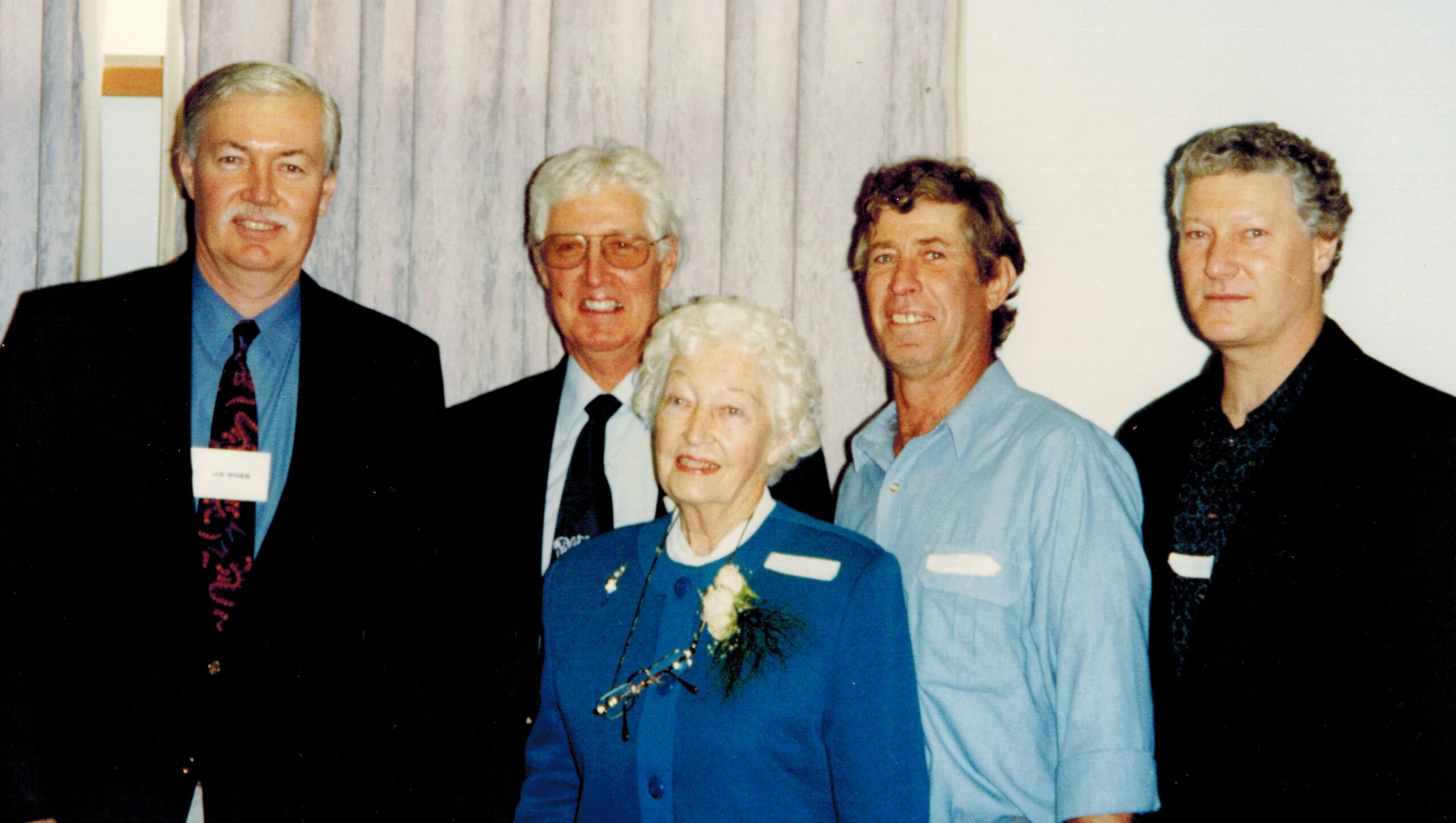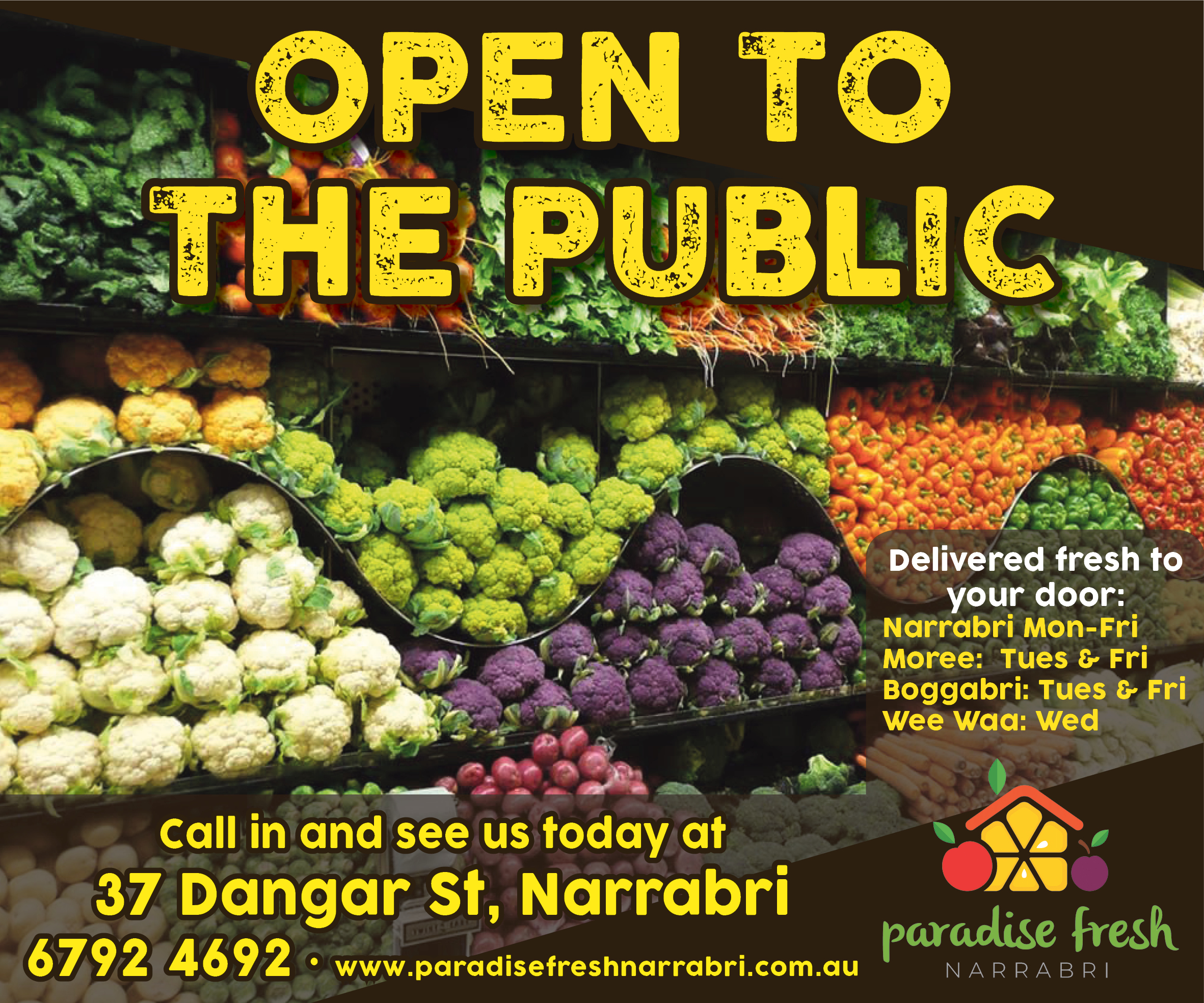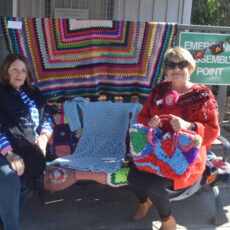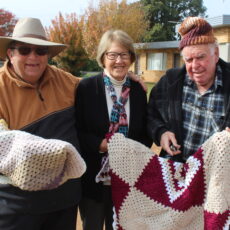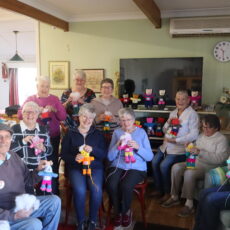On Sunday, May 21, 2023, Ian ‘Gundy’ Francis Whan, husband of Vicki and father of Jodi, Emily and Rachel, passed away in Toowoomba, aged 76 years.
Born at Baan Baa on January 31, 1947, Ian was the second son of Raymond and Avis Whan (née McGregor) and was raised on the family farm with his three brothers, Graeme, Douglas and Stuart. This is his story.
Foreword
by Douglas Whan
Several weeks ago I received a call from my closest brother Ian, informing my wife Jenny and I that he was embarking on a trip to visit his and Vicki’s five siblings – a round trip of about 2000 kilometres.
Setting off from his home base in Toowoomba we were his first stop over at Boggabri.
They arrived in a big flash new ute, as they do, and I’m thinking to myself he plans to do a fair bit of travelling yet.
That was March 23, 2023. But not long after they arrived home, Ian went into hospital with a suspected mild stroke – how could this be – he’s always been as fit as a Mallee bull.
On May 2, I received a phone call from Vicki telling me “Ian’s really crook, you had better come, they think he has CJD”.
Creutzfeldt-Jakob disease (CJD) is a debilitating disease of the brain for which there is no cure.
Nothing could have prepared me for the shock of seeing my brother in such a stressed state of mind and body.
Ian sadly passed away on May 21, just a few weeks after being diagnosed, aged 76.
Ian had previously been approached by the Toowoomba Probus Club to join their ranks.
Apparently, the new chum is required to tell his life’s short story upon joining the fold.
As it turned out, Ian never had the opportunity to address his Probus contemporaries, and in effect he was unwittingly writing his own obituary.
So here it is – the kid from the little village of Baan Baa on the Kamilaroi Highway, a population of something less than 100, makes some ripples in the big arena.
Getting To Know You
by Ian Whan
I really do hate to talk about myself. But at last, I’ve been trapped by the Probus ‘Getting to Know You’ (GTKY) convention.
Fifteen minutes from now, you will know more about me than my own kids do.
I was the second in a family of four boys.
My parents had one thousand-hectares of tiger country at Baan Baa on the eastern side of the Pilliga Scrub.
My secondary schooling was at Farrer Memorial Agricultural High School located on the Peel River outside Tamworth.
Due to a merciful quirk in the NSW Leaving Certificate assessment system, I won a scholarship and decided to study agricultural economics at the University of New England.
My first job after graduating was at Kununurra on the Ord River.
Back in the late 1960s, LJ Hooker owned a lot of country in the Kimberley region including an irrigation farm only 10 kilometres outside Kununurra, known as Hooker Farm.
This farm became the site for self-funded research aimed at getting a handle on the agronomics and economics of producing grain-finished cattle in the Kimberley.
The research was conducted by two agronomists and a production economist with oversight by two University of New England professors.
Like many northern adventures of the 1970s, Hooker’s ended in tears.
The relevance of the research project was subjugated by what might be called ‘Kimberley Realities.’
After three years, I was destitute, but had a good suntan and a Master of Economics degree.
In 1973, I worked for the Agricultural Business Research Institute in Armidale where we were subcontracted by Australia’s first enquiry into poverty – the so-called Henderson enquiry.
My job was to investigate and report on examples of poverty in the bush.
During my investigations in this part of the world, I met-up with one George Houen – so amazingly I have known another member of this august club for 50 years.
While approaching Toowoomba from the south (possibly on the Karara Road) I spied a weather-smitten old codger clinging desperately to a small, open-air steel-wheel tractor.
It was at that exact moment that my love affair with the inner Darling Downs began.
Towards the end of 1973 I had two lucky breaks.
First, I got married to Vicki; she was not only a splendid example of the fairer sex, but she was sharp as a whip with an honour’s degree in science.
The second stroke of luck was landing a one-year job in Thailand.
I was to be the production economist for a joint Thai-Australian project based at Chainat, located on the northern edge of the Central Plain and on the mighty Chao Phya River.
We flew first class out of Brisbane just as the mega flood event of January 1974 was descending.
I worked hard in Thailand, but also took the opportunity to travel extensively throughout the country.
Following this experience I got some flash job offers and could have taken a deep dive into the murky world of international consulting. But I turned my back on all the hype.
I wanted a space in Australia where a young couple could get professional jobs and our future kids would grow up knowing they were dinkum Aussies.
In 1976, jobs in my line of work were scarce.
At least that’s my excuse for taking a job with the Australian Sugar Producers Association in Brisbane.
A big mistake, because the job was poorly defined and not demanding of my skill set – and I found it hard to develop empathy for the sugar industry.
But at least it got us to Queensland, where I wanted to be.
I should have jumped ship sooner, but eventually I took a job as an agricultural economist with the DPI in William Street.
The Queensland public service was a dismal place in the 70s, but the work I got to do tested my analytical skills to the max.
In 1977 I undertook the Cost Benefit Analysis for the proposed Burdekin Falls Dam.
What’s more the scheme went ahead, at least partly on the strength of my analysis.
But I wanted out of Brisbane, and in 1978 we re-located to Goondiwindi, with me as the regional economist.
This was a good job, I received a positive reception from local farmers and the community, and two of our three girls were born in Goondiwindi.
And I wrote lots of papers, one, about the cost of delay in harvesting wheat, which was published in the Review of Marketing and Agricultural Economics – a world class journal.
I also started publication of a monthly newsletter called The Country Courier – aimed at local farm households.
Two current members of this club were leading lights at Goondiwindi when I was there.
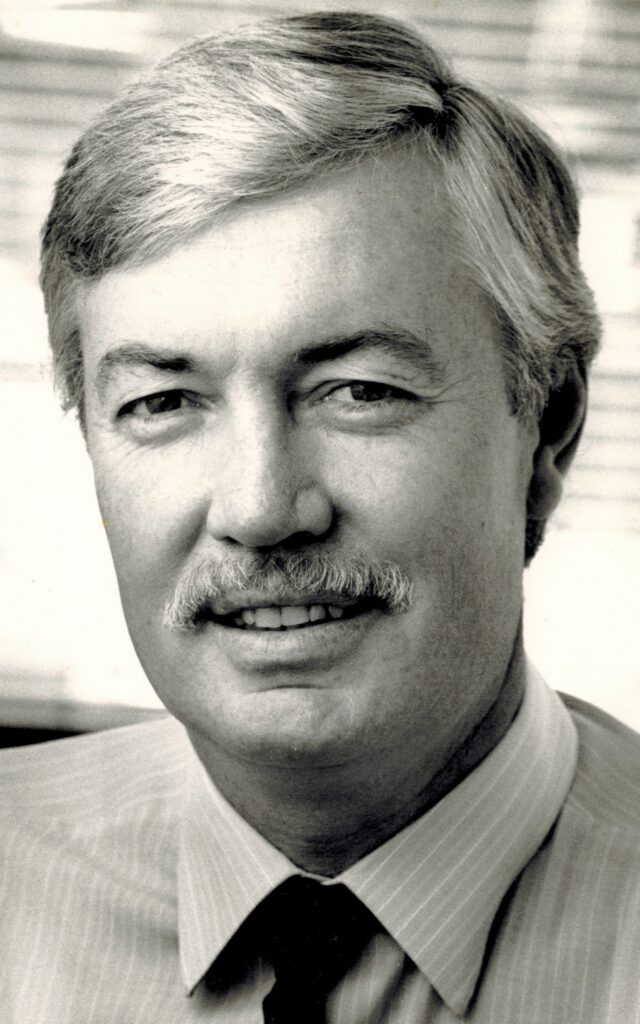
An earlier photo of Ian Whan.
In the 1980s, out came the chopping block.
The big kahunas in George Street wanted to shrink the DPI and put the money saved into police, schools and health.
They didn’t know what to do with me; eventually I helped out by saying I’d take study leave.
In early 1984, we packed three kids and a TV set into the Ford Cortina and headed for Melbourne.
It took a while to get settled but eventually we enjoyed Melbourne a lot – even took in a few games of AFL at the MCG.
In the space of 17 months, I wrote another master’s thesis, did a bit of consulting, and saw a fair chunk of Victoria.
Towards the end of our southern sojourn I was offered the post of Chief Research Officer with the Livestock and Meat Authority of Queensland.
It’s just amazing how things can turn out.
I had five years at the Livestock and Meat Authority (1985-90) with one big high and one big low, and lots in-between.
The high was being involved in organising the 34th International Congress of Meat Science and Technology in Brisbane in 1988.
The low was getting subpoenaed to appear before a federal court case brought against Elders for market domination (of beef processing).
Because the case succeeded and I had been subpoenaed by the defence, my sense of right and wrong persuaded me to walk.
But as a parting shot, I pointed out that the international competitiveness of the beef industry was being stymied at that time by poor utilisation of abattoir processing capacity.
It was simply bizarre that a case of market domination could be brought against a processor that was trying to find a way of bringing down the unit costs of converting cattle into carton beef.
Without much enthusiasm, I next took a job as Livestock and Development Manager with Darling Downs Bacon in Toowoomba.
This job was well enough paid and carried with it manager statuses, but the firm itself already had one foot on the banana peel.
The general manager at the time had no redeeming features and the factory was hopelessly antiquated with little prospect of modernisation.
The smartest thing I did during my time working for Darling Downs Bacon was buy a 100-acre block at Felton, 30-odd kilometres south of Toowoomba.
This happened in July 1992 and thereafter I had something upon which to inflict all my spare energy and frustrations – mainly getting rid of weeds and reconstructing fences etc.
What I was actually doing was turning a dream into reality.
This meant preparing the property for when we might move there permanently.
Before we built the house in 2011, I had installed the shed, had the gravel road put-in, put the power on, dropped down a bore, got piping and tanks in place and even fenced the house yard and planted trees.
There’s probably a saying that goes something like this: “…when all else fails, give consulting a go”.
To start with I worked as an employee consultant, then as a partner in another consulting start-up, but in mid-1997 I struck out on my own – I registered as Alliance Resource Economics and either bid as a lone ranger or put together teams best equipped to handle each specific job.
Being my own boss felt good, but it was still character building; the trick was to bring in new work before the existing work ground to a halt.
This was the only way to keep the cash flowing.
Looking back, I get some satisfaction from all the projects completed (always marked by delivery of a written report) and papers published (about 50).
Some clients could never be pleased, regardless of how faithfully you met the terms of reference, but in most cases, clients got what they paid for.
In 2011 we built a house on the Felton block, and it wasn’t long after that I stopped bidding for project work.
In terms of getting things done, the last decade of my life has been the most gratifying.
Before leaving Brisbane and winding down my consultancy, I became heavily involved in the fight against establishment of a large, open cut coal mine at Felton.
The fight was led by Friends of Felton, and I was president in August 2012 when the Queensland premier at the time, Campbell Newman, wrote to us saying there will be no coal mine in the Felton Valley.
In the same year the Felton Food Festival started up; it was run as an offshoot of Friends of Felton and went for six years – by which time all the volunteers were totally spent.
Despite enormous overhead costs and never charging attendees an entry fee, the festival still had some shackles in the bank.
With no compelling reason to keep it going, I orchestrated the termination of Friends of Felton (at the AGM last November) and transferred residual assets to the Felton Hall Association.
I’m proud to have played a major hand in getting Felton a new hall – the original hall was built in 1931 by local farmers but had no toilets or kitchen.
Up to the present, I have won more than $100,000 in grant funding for the new hall – opened in October 2016 by local member, Pat Weir.
The funds were used to get the second-hand building in place, replace the roof, put in a new kitchen, install a six-kilowatt roof-top solar system, and secure a 46-inch ride-on mower plus numerous smaller items.
This pretty much brings us up to now and my introduction to Probus.
I’m attracted to the club’s declared objectives – particularly the expectation that all members will look out for one another.
Also I’m looking forward to participation in animated discussions about all things relevant and the vast array of gentle activities, appropriate to our stage of life.
*******
A perpetual hard worker, dedicated to his community and a devoted grandfather to his grandchildren, Harry, Estel and Aggie, Ian Francis Whan is survived by his wife Vicki, his daughters Jodi, Emily and Rachel and their families, and his three brothers Graeme, Douglas and Stuart.
To order photos from this page click here

